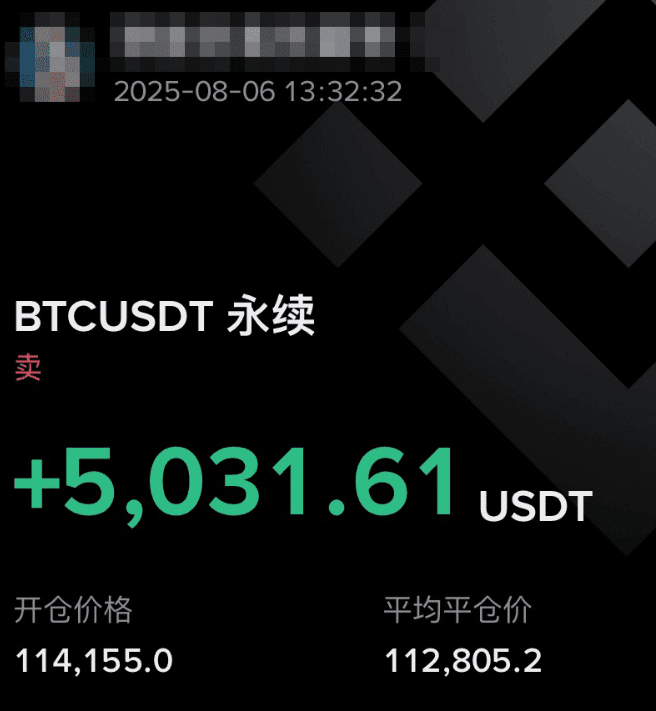After years of navigating the crypto space, I increasingly feel that the key to long-term profitability in trading lies within those seemingly simple principles. Today, I am sharing the core principles and position management methods I have summarized from practical experience; these are actionable insights.
One, principles that must be adhered to in trading.
Never lose patience with the market.
The market won't follow your schedule; sometimes consolidating for several days or even weeks is normal. Rushing in will only lead you to be swayed by fluctuations. Patiently waiting for signals is ten times more reliable than acting blindly. I once lost a lot by entering early due to impatience during consolidation, later realizing that good trading comes from waiting.
Don't be certain that the market 'will definitely do this'.
There are no 'certainties' in candlestick charts; those who say 'it will definitely rise' or 'it will absolutely fall' are either scammers or beginners. I have seen too many people blow up their accounts because they were overly confident in their judgments. Remember, the market is always right; the only thing wrong is your obsession.
Not acting is better than acting chaotically.
Many retail investors feel itchy if they don't trade for a day, wanting to act just by watching market fluctuations. But the result of frequent buying and selling often leads to high transaction fees, reducing the principal. In uncertain times, staying in cash is also a strategy; at least you won't lose.
The secret to success is summed up in three words: plan, discipline, follow the trend.
Before opening a position, clearly define your profit-taking and stop-loss points; that's the plan. When the price reaches those points, execute decisively; that's discipline. When you can't tell the direction, follow the moving averages and trends; that's the safest path. Without any of the three, profits will be fleeting.
Two proven position management methods from practice.
1. Left-side position management (suitable for bottom-fishing players).
This method does not allow you to throw in all at once, but rather to enter the market in batches to spread the cost, especially suitable for those who want to bottom out but are afraid of entering too early.
Divide your capital into multiple portions; don't throw it all in at once. For example, invest 20% first, add 30% after a certain drop, and if it drops further, add 50%. The more it drops, the larger the proportion you add, like a funnel catching it.
Adding positions should depend on the market situation; don't add just because it drops a little. Frequent adding can actually raise the average cost. I generally wait until a key support level is broken before considering adding, which is more prudent.
The advantage is that the initial risk is small; as long as the bottom is confirmed, the profit potential is considerable. However, you must be able to endure short-term fluctuations; don't use this method if you lack that mindset.
2. Right-side position management (suitable for trend followers).
Follow the trend, wait for clear signals before taking action; this is less risky for beginners.
First position addition (30%): When the 5-day moving average crosses above the 10-day moving average, this is the first signal of trend initiation; start with a trial position.
Second position addition (30%): When the price breaks above the life line (like the 20-day moving average), add when it pulls back. At this point, the total position reaches 60%, and add more once the trend stabilizes.
Third position addition (20%): Breakthrough the neckline or key resistance level, pull back and stabilize, indicating a reversal pattern has formed. Increase to 80% position, leaving 20% for unexpected events.
Fourth position addition: If above the life line, and the 5-day and 10-day moving averages cross again, that’s a signal to accelerate. Those willing to chase can add one last position, but remember to set a stop-loss.
Three, the last heartfelt words I want to say.
Those who engage in systematic trading will eventually grasp the method. What’s scary is fishing for three days and sunbathing for two, learning left-side today and switching to right-side tomorrow, doubting back and forth, and ultimately learning nothing.
A fan from Hunan previously contacted me; a friend from Hunan had continuously faced liquidation and wanted to cancel his account with a certain platform, only to find that the contract was a negative asset and could not be canceled, leading to frustration.
The thrill of 20x leverage is just an appetizer; 50x and 100x leverage are the true abyss. When a few thousand USDT margin fluctuates to the equivalent of an ordinary person's monthly salary in just a few minutes, you’ll find your dopamine threshold completely raised, becoming numb to everything in real life.
I told him: Don't focus on making a lot of money first; let's triple the account first.
In the crypto world, retail investors are most likely to fall into two traps: first, trading every day, thinking that more trades mean more profits; second, blindly following others without using their own brains. In reality, the true way to trade cryptocurrencies is not about how many trades you make, but whether you can maintain rationality and have the patience to wait for opportunities.
One more thing to remember: first, figure out how much you can afford to lose. Knowing where your bottom line is allows you to create a suitable position plan. Never go all in; if your mindset collapses, all the money you put in will be wasted.
These are principles I realized after making mistakes. If you find them useful, feel free to try them out. In trading, it's not about speed, but about avoiding chaos. Keep a steady rhythm, and making money is just a matter of time.
Follow me, after all, those who can survive in the market and still make money are always those who dare to reach out first.
Are you ready?

